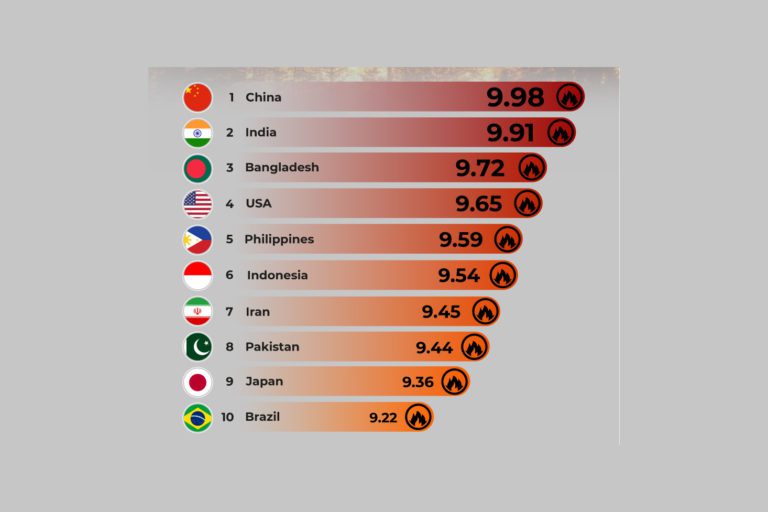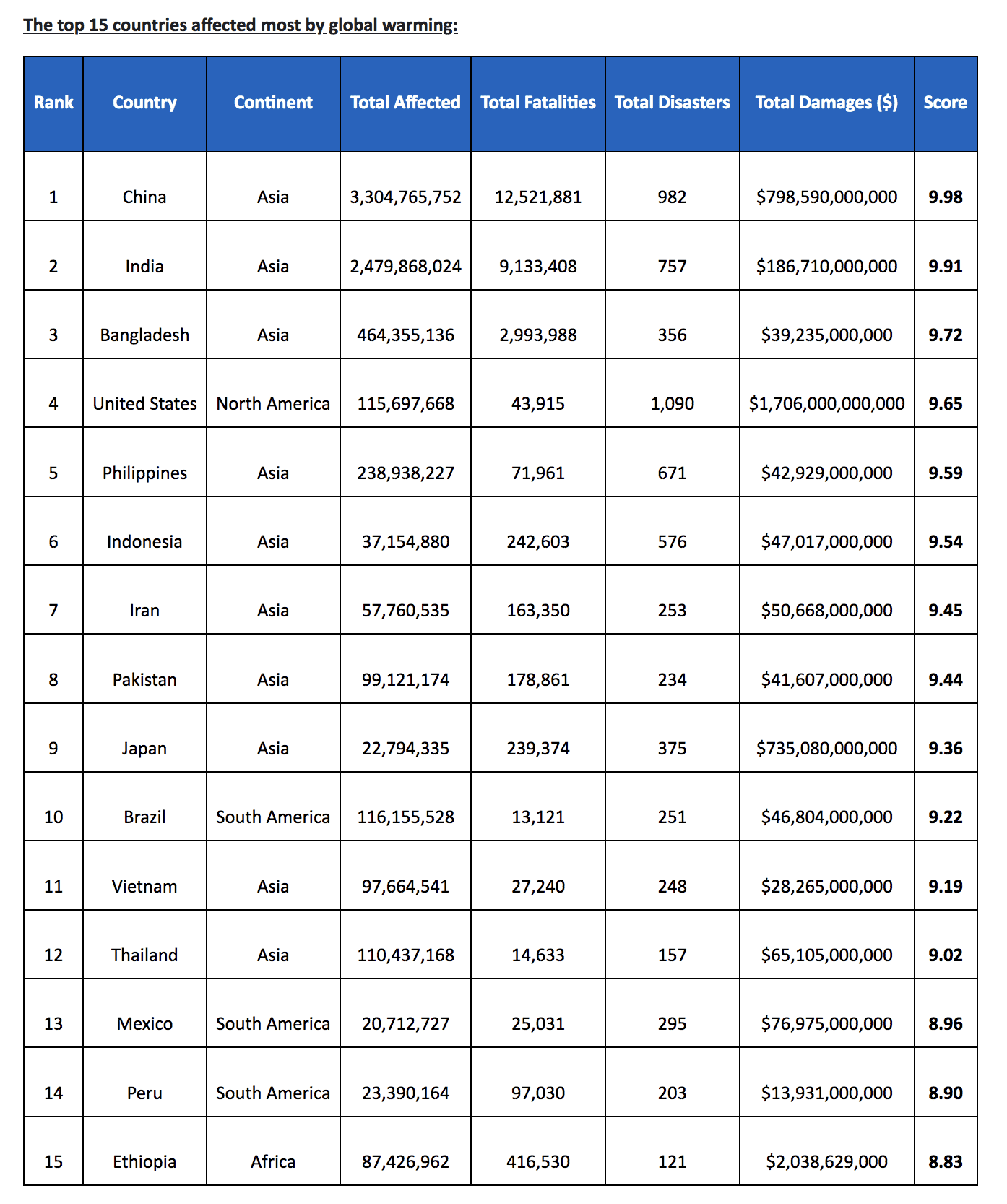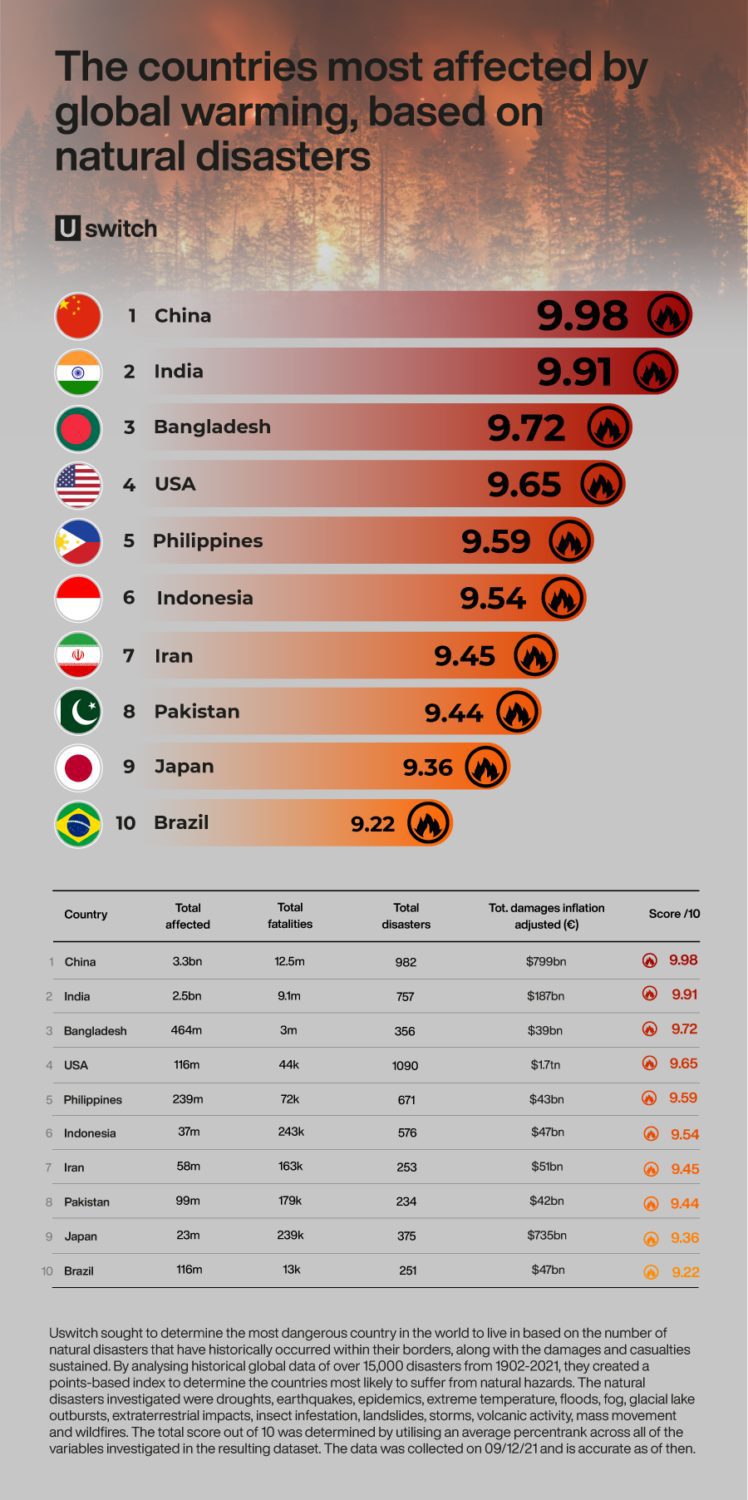ENVIRONMENT
The countries most affected by global warming, based on natural disasters

WORDS: Thomas Fox - Journalistic.org PHOTOGRAPHY
From earthquakes to excessive floods, extreme and unpredictable natural hazards impact every country around the world. To combat the effects of climate change and the vast rise in natural disasters over the past 50 years, nearly 200 countries agreed to the “Glasgow Climate Pact” at the 26th global United Nations climate summit (COP26) in November 2021.
Australia ranks 26th worldwide with a score of 8.20/10. The 248 natural disasters the country has endured have resulted in damages of over $103,000,000,000 with the most prominent disasters being storms (111), floods (68) and wildfires (42).
China is the country most affected by global warming, scoring 9.98 out of 10. The country ranks first for both total number of people affected (3,304,765,752) and total fatalities (over 12.5 million). From 1902 to November 2021, the country was impacted by 982 natural disasters – the second highest in the world overall, only behind the United States with 1,090. Earthquakes (199 – the most in the world), storms (319) and floods (311 – the second highest in the world) are China’s most prominent disasters. Asian countries are the most affected by global warming, as 66% of the 15 countries most impacted by natural disasters are in Asia!
India is in second place among the countries most affected by global warming with an index score of 9.91/10. India also ranks second for the total number of people affected by natural disasters with over 2.4 billion. Alongside this, India’s total number of disasters is the third highest in the world with 757. They have suffered from more floods (315) than any other country, and the number of epidemics (70) is the second highest in the world.
Bangladesh ranks third with a score of 9.72 out of 10. The country ranks third highest overall for the total number of people affected (464 million) and fatalities (3 million). They have suffered a total of 356 natural disasters with 80% of the disasters being either floods or storms which resulted in an economic impact of just under $40 billion.
In fourth is the United States of America with an index score of 9.65/10. From 1902 to November 2021, the country was impacted by 1,090 total disasters – the most in the entire world, and the highest amount of economic impact at a massive $1.7 trillion. With the highest number of storms (685) in the world, the USA also ranks highly in both floods (201) and wildfires (92).
Completing the top five is the Philippines with a score of 9.59/10. Having experienced 671 natural disasters, the Southeast Asian islands predominantly face storms (377) and floods (156), which have affected 239 million people and have led to a total cost of $43 billion in damages.
Interested by this, Uswitch.com/gas-electricity sought to find out which country is the most affected by global warming, based on the occurrence of natural hazards. By analysing historical global data of over 15,000 disasters from 1902-2021, they created a points-based index to determine the countries most likely to suffer from natural hazards. The index consists of the following factors: total number of disasters experienced, number of affected people, fatalities, and monetary cost of damage.
This research is part of a larger study into the most dangerous countries to live in based on natural disasters from around the world.
https://www.uswitch.com/gas-
Methodology
- Energy experts at Uswitch.com sought to determine the most dangerous country in the world to live in based on the number of natural disasters that have historically occurred within their borders, along with the damages and casualties sustained.
- For this study, time-series data of natural disasters that have occurred globally from 1902-2021 was extracted from EM-DAT. The source provides a comprehensive account on natural disasters, their locations and impacts over a time-period.
- The natural disasters investigated were droughts, earthquakes, epidemics, extreme temperature, floods, fog, glacial lake outbursts, extraterrestrial impacts, insect infestation, landslides, storms, volcanic activity, mass movement and wildfires. Factors that determine the impact of natural disasters in each country include the number of disasters, damage caused, people affected and total fatalities.
- The selection of countries were filtered for those only as members of the UN. Lastly, to optimise our choice of weightings, an additional column comparing total damages to the countries’ most recent GDP was implemented as a total percentage.
- The total score out of 10 was determined by utilising an average percentrank across all of the variables investigated in the resulting dataset. The weights were asymmetrically distributed between the variables such that total affected and total disasters had a greater influence on the score.
- The weighted percentrank score provides a comprehensive rating and is used to determine the most dangerous country in the world to live, based on natural disasters.
- The data was collected on 09/12/21 and is accurate as of then.
References: Acknowledging the data provided by EM-DAT: EM-DAT, CRED/ UCLouvain, Brussels, Belgium.











